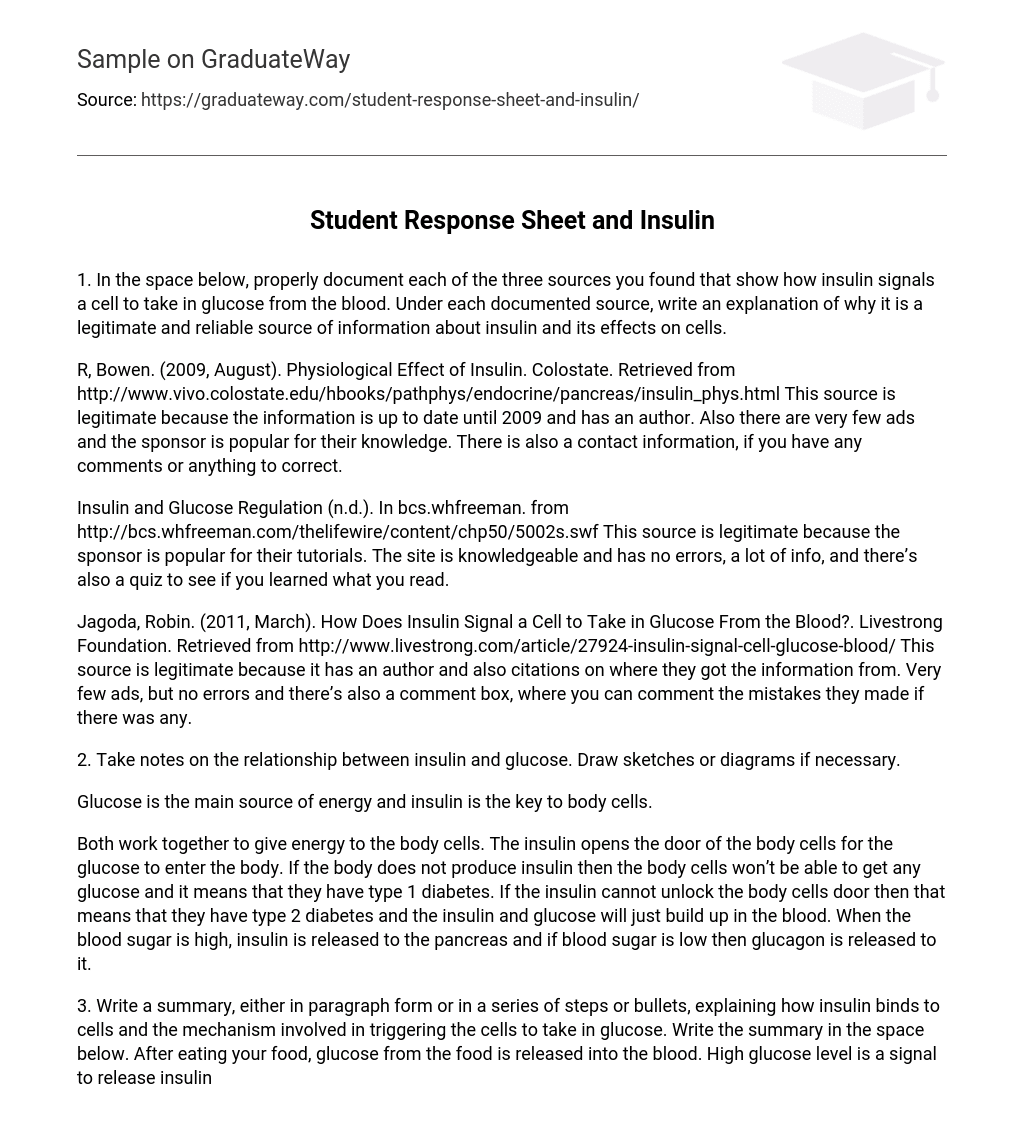Instructions are given below on how to document three reliable sources that demonstrate how insulin signals a cell to absorb glucose from the bloodstream. Additionally, an explanation is required for each source, providing reasons why it is considered a legitimate and trustworthy source of information regarding insulin and its effects on cells.
R, Bowen. (2009, August). Physiological Effect of Insulin. Colostate. Retrieved from http://www.vivo.colostate.edu/hbooks/pathphys/endocrine/pancreas/insulin_phys.html This source is legitimate because the information is up to date until 2009 and has an author. Also there are very few ads and the sponsor is popular for their knowledge. There is also a contact information, if you have any comments or anything to correct.
Insulin and Glucose Regulation (n.d.). In bcs.whfreeman. from http://bcs.whfreeman.com/thelifewire/content/chp50/5002s.swf This source is reliable as it is sponsored by a renowned tutorial provider. The website is informative, accurate, and offers abundant information along with a quiz to assess one’s understanding of the content.
The Livestrong Foundation’s source “How Does Insulin Signal a Cell to Take in Glucose From the Blood?” by Jagoda, Robin (2011, March) provides valuable insights into insulin and its role in glucose uptake. The credibility of this source is evident with the inclusion of an author and accurate citations. Additionally, it stands out by being both ad-free and error-free. Readers also have the opportunity to provide feedback on any potential errors through a comment box. Retrieved from http://www.livestrong.com/article/27924-insulin-signal-cell-glucose-blood/.
To comprehend the connection between insulin and glucose, it is recommended to document observations or produce visual representations such as sketches and diagrams.
Glucose serves as the primary energy source while insulin is essential for body cell functioning.
Insulin and glucagon collaborate to supply energy to body cells. Insulin is essential in facilitating glucose entry into cells by opening their doors, a critical factor in preventing type 1 diabetes where glucose accessibility to cells is compromised. Conversely, type 2 diabetes inhibits insulin from unlocking cell doors, causing the accumulation of insulin and glucose in the bloodstream. The pancreas releases insulin when blood sugar levels rise and secretes glucagon when they decline.
The process of insulin binding to cells and triggering glucose uptake can be summarized as follows:
- Glucose is released into the bloodstream after food consumption.
- A high level of glucose in the blood signals the release of insulin.
- Insulin binds to cells, promoting the uptake of glucose.





